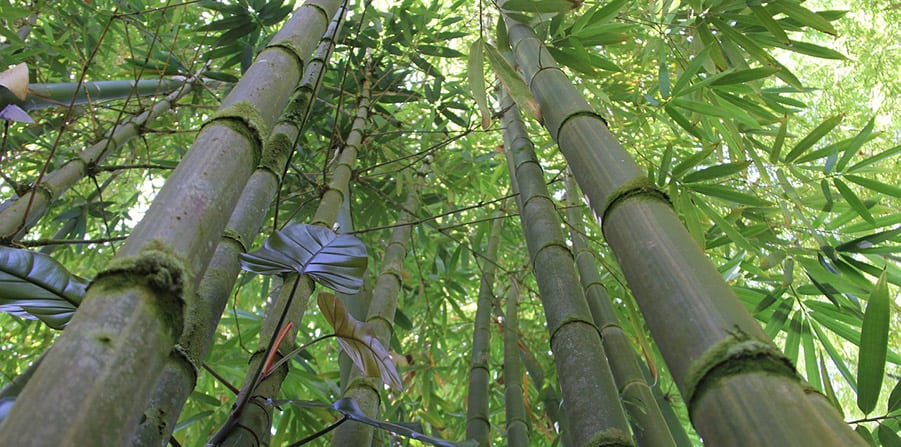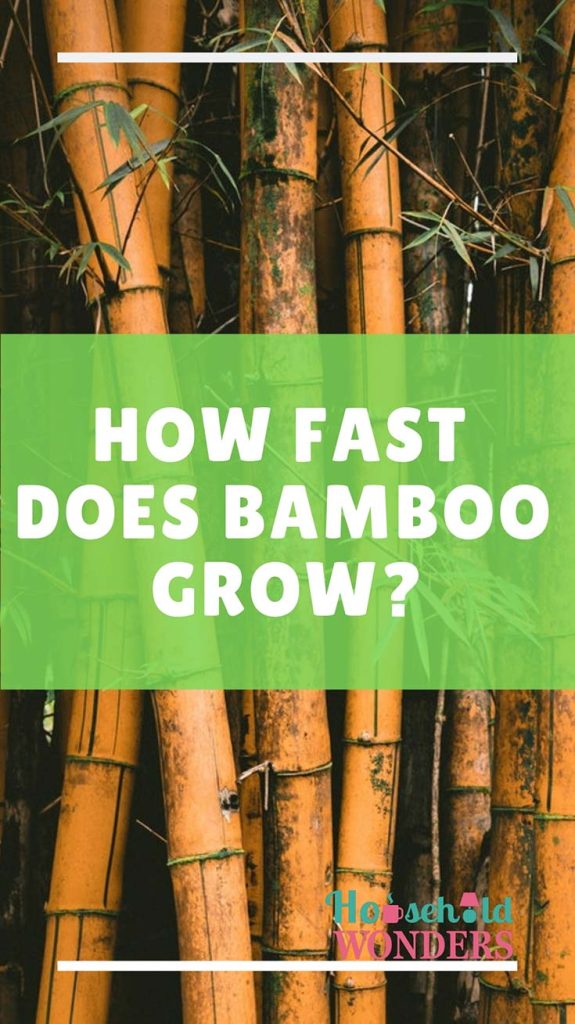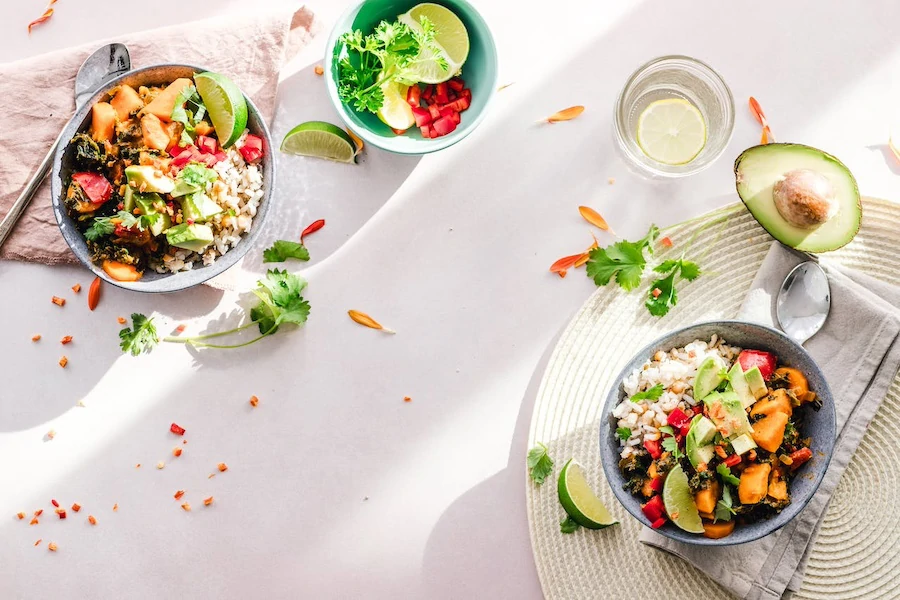
As you may know, I am no stranger to bamboo products in my kitchen and home. It’s such a durable and reliable material that I wondered exactly how fast bamboo grows. I did some research on the reasons for this fast-growing plant and snack-of-choice for pandas.
So how fast does bamboo grow? Certain species of bamboo can grow 36 inches (91cm) within a 24-hour period, at a rate of almost 1.6 inches (4cm) an hour (a growth around 1 mm every 90 seconds, or 1 inch every 40 minutes). It is likely these species include the largest members of the genera Bambusaand Phyllostachys.
This rapid growth doesn’t happen by chance, bamboo needs the perfect conditions. The species type, climate, soil, and growth patterns all have an influence on the overall growth rate of bamboo. But first, let’s take a deeper look into the details of how exactly bamboo grows so fast.
How Does Bamboo Grow So Fast?
The “growth” is actually elongation. If you’ve seen a grove of large bamboo plants, you may have noticed a 6-8 inches (15–20cm) “cone” at the base of the clump, pointy side up. That small cone contains all of the cells that will eventually become a new bamboo stem, called a “culm”.
When conditions allow, the root system guides water into those cells, which then rapidly inflate. Because the cell walls constrain lateral expansion, the cells quickly elongate. Side stems and leaves will develop later.
Think of a bamboo stem as a “slinky” toy. It may be about four inches tall when sitting, fully compressed, but it can “grow” to 20-30 times that length by stretching it out – without losing any of the cell’s diameter. All the plant needs to do is fill the cell with (mostly) water, which bamboos are very efficient at doing. Thus, bamboos are the fastest “growing” plants in the world; up to nearly 3 feet (1m) in a day for a few species.
The world record for the fastest growing plant belongs to certain species of the 45 genera of bamboo, which have been found to grow at up to 35 inches (91cm) per day. It is very likely these species contain Bambusa and Phyllostachys, the largest members of the genera.
Here is a quick list of some of the most efficient and fast-growing bamboo species:
Moso Bamboo
Species name: Phyllostachys Moso
It can grow to a height of 10 feet (3 meters) in a little more than three weeks. This bamboo also grows thicker as it grows taller. While at 10 feet (3m) the Moso can measure more than 5 inches (13cm) near its base. Moso bamboo is classified as a timber bamboo and is often used in China and other countries for food, plywood, paper, flooring, and furniture.
Greenstripe Vivax
Species name: Phyllostachys vivax
This giant specimen timber bamboo grows quickly to 45 feet (14m) with a diameter of 5 inches (13cm). It is attractive, with green stripes on its yellow canes with large leaves. It is a relatively rare species.
Golden Bamboo
Species name: Phyllostachys aurea
Also called “fishing pole bamboo”, this slender bamboo makes a good privacy screen because it can form a dense grove when it remains untrimmed. The canes are light green when they first emerge but turn gold when they receive plenty of sunlight. It can tolerate full-sun and achieves a mature height of 35 feet (11m). It grows more slowly in cooler climates.
Silverstripe Bamboo
Species name: Bambusa dolichomerithalla
A fast-growing, clumping type of bamboo, reaching an adult height of 25 feet (7.6m). Aptly named for its white stripes on its leaves and sometimes on its culms, which grow to only 1 inch (2.5cm) in diameter.
Best Conditions for Bamboo Growth
Surprisingly enough, bamboo is actually classified as a grass! There are over 1000 species of bamboo which are in the plant family Poaceae, or “grasses.” To avoid any confusion, I will still refer to bamboo as a plant. Exactly how quickly the fastest-growing species (plural) can grow is really dependent on the climate conditions and soil at the site where they live.
Bamboos thrive in moist, but well-drained soil and in a full-sun spot for at least six hours daily.
Bamboos are tough plants! They are not too picky about soil and can thrive in heavy clay, sandy, loam, or even rocky soils. Bamboo can also tolerate a degree of neglect, but there is one thing it doesn’t like: wet feet.
They generally cannot tolerate poorly drained soil or constant wet and boggy soil conditions. Soil that is constantly over-saturated with water will suffocate the roots from getting air and can cause the roots to rot. The addition of sand or any other granular material can be mixed to improve drainage. In contrast, If the soil is too sandy or light, then organic material such as compost can be mixed to help retain moisture.
Geographically, bamboo species are native to the Asia-Pacific region due to its tropical climates. Native species are also found ranging from South American tropical rainforests to Central America to the Southeastern United States. However, some species are native to cool mountainous regions and highland cloud forests such as the Andes mountain range in Ecuador.
The fastest-growing species have been recorded in warm temperate and tropical climates which offer optimal conditions for growth. Some may exceed nearly 100 feet (30m) in height within a month’s time. The tallest recorded species in the tropics was reportedly 130ft (40 m). In Europe and the USA, the tallest recorded species was 65-98ft (20-30 m).
Growth Patterns – Clumping vs. Running
All bamboos spread via rhizomes (think an underground system of stems). The two general growth patterns for bamboo are “clumping” and “running”.
Clumping bamboos are well-behaved, attractive, and non-invasive. They have shorter rhizomes that stay closer to their point of origin and do not spread so rapidly. Clumping bamboos naturally grow upwards and outward from the center, and because of their slow spread rate, grow within a fairly tight, contained circle.
Clumpers will grow tall faster than runners, however, they will stay shorter if they are planted in a small contained area. They prefer a tropical climate where temperatures rarely go below 59 to 82 degrees F (15 to 28 degrees C).
Running bamboos have long rhizomes that quickly spread horizontally. Also known as “invasive bamboos”, they need to be controlled during cultivation because of their potential for aggressive behavior. Their long rhizomes will grow away from the main parent plant and will spread rampantly if not contained.
Bamboo “runners” can be easily contained since the rhizomes grow sideways at a depth of only about 2-18 inches (5cm-46cm). They grow taller and thicker in cooler climates than they do in more tropical settings.
Both clumping and running bamboos will provide a quick and impenetrable hedge, graceful groves, or attractive spot plantings.
Related Questions
Why is bamboo a sustainable plant? Bamboo is famously known for its sustainability due to its rapid and chemical-free growth, ability to grow in a diverse range of environments throughout the world, and producing 35% more oxygen than its equivalent size in trees.
How strong is bamboo? Bamboo has a higher specific compressive strength (ability to withstand heavy loads) than wood, brick, or concrete, and a specific tensile strength (how hard it is to pull a material apart) that rivals steel. This makes bamboo one of the strongest materials on earth.
Why do pandas eat bamboo? Millions of years ago pandas were carnivores but now carry an inactive gene for the ability to taste meat and savory flavors, making their appetite for meat disappear. Bamboo has little nutritional value so pandas must eat 26-84lbs (12-38 kg) every day to meet their energy needs.




